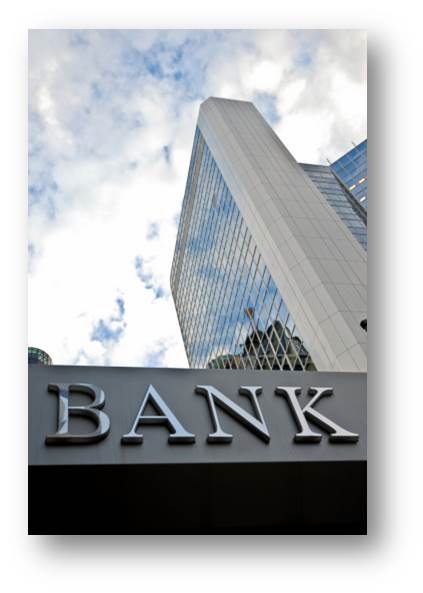Tag: CFPB

Time to dust off those compliance plans and ensure you are prepared for the new regulations, specifically surrounding the Military Lending Act (MLA). Last July, the Department of Defense (DOD) published a Final Rule to amend its regulation implementing the Military Lending Act, significantly expanding the scope of the existing protections. The new, beefed-up version encompasses new types of creditors and credit products, including credit cards. While the DOD was responsible for implementing the rule, enforcement will be led by the Consumer Financial Protection Bureau (CFPB). The new rule became effective on October 1, 2015, and compliance is required by October 3, 2016. Compliance, however, with the rules for credit cards is delayed until October 3, 2017. While there is no formal guidance yet on what federal regulators will look for in reviewing MLA compliance, there are some insights on the law and what’s coming. Why was MLA enacted? It was created to provide service members and their dependents with specific protections. As initially implemented in 2007, the law: Limited the APR (including fees) for covered products to 36 percent; Required military-specific disclosures, and; Prohibited creditors from requiring a service member to submit to arbitration in the event of a dispute. It initially applied to three narrowly-defined “consumer credit” products: Closed-end payday loans; Closed-end auto title loans; and Closed-end tax refund anticipation loans. What are the latest regulations being applied to the original MLA implemented in 2007? The new rule expands the definition of “consumer credit” covered by the regulation to more closely align with the definition of credit in the Truth in Lending Act and Regulation Z. This means MLA now covers a wide range of credit transactions, but it does not apply to residential mortgages and credit secured by personal property, such as vehicle purchase loans. One of the most significant changes is the addition of fees paid “for a credit-related ancillary product sold in connection with the credit transaction.” Although the MAPR limit is 36 percent, ancillary product fees can add up and — especially for accounts that carry a low balance — can quickly exceed the MAPR limit. The final rule also includes a “safe harbor” from liability for lenders who verify the MLA status of a consumer. Under the new DOD rule, lenders will have to check each credit applicant to confirm that they are not a service member, spouse, or the dependent of a service member, through a nationwide CRA or the DOD’s own database, known as the DMDC. The rule also permits the consumer report to be obtained from a reseller that obtains such a report from a nationwide consumer reporting agency. MLA status for dependents under the age of 18 must be verified directly with the DMDC. Experian will be permitted to gain access to the DMDC data to provide lenders a seamless transaction. In essence, lenders will be able to pull an Experian profile, and MLA status will be flagged. What is happening between now and October 2016, when lenders must be compliant? Experian, along with the other national credit bureaus, have been meeting with the DOD and the DMDC to discuss providing the three national bureaus access to its MLA database. Key parties, such as the Financial Services Roundtable and the American Bankers Association, are also working to ease implementation of the safe harbor check for banks and lenders. The end goal is to enable lenders the ability to instantly verify whether an applicant is covered by MLA by the Oct. 1, 2016 compliance date. --- If you have inquiries about the new Military Lending Act regulations, feel free to email MLA.Support@experian.com or contact your Experian Account Executive directly. Next Article: A check-in on the latest Military Lending Act news

Accuracy matters. It matters in dart throwing, math calculations, and now more than ever, in data reporting. The Consumer Financial Protection Bureau (CFPB) issued a bulletin on Feb. 3 warning banks and credit unions that if they fail to meet accuracy obligations when reporting negative account histories to credit reporting companies, the result could be bureau action. As noted in the Fair Credit Reporting Act (FCRA) section 623, data furnishers have an obligation to ensure the accuracy of the information furnished to a Credit Reporting Agency (CRA). Violation of these rules presents a variety of risks, and the regulatory agencies have enforced harsh consequences. Avoiding penalties is certainly a strong incentive for data furnishers to implement a formal compliance management system and data quality program. But there are additional benefits to ensuring accuracy – most notably keeping customers happy and loyal, and maintaining a reputable brand in the marketplace. Today’s consumers increasingly understand the impact of credit scoring and data reporting, and recognize a poor credit score can impact their lives in major ways. Credit is tied to so many milestone financial moments. Securing mortgage loans, auto loans, obtaining low-interest rate interest credit cards and securing private student loans can all be derailed with an unfavorable and inaccurate credit report. Not to mention credit reports can influence one’s eligibility for rental housing, setting premiums for auto and homeowners insurance in some states, or determining whether to hire an applicant for a job. To properly serve customers who simply expect a fair and accurate representation of their financial history, data furnishers must be able to guarantee the credibility of their reported data. Those organizations that cannot ensure accuracy put their reputation at risk and may lose a customer’s trust and business. “Consumers should not be sidelined out of the basic banking services they need because of the flaws and limitations in a murky system,” Cordray said in the bulletin. “People deserve to have more options for access to lower-risk deposit accounts that can better fit their needs.” The CFPB has handled more than 105,000 credit-reporting complaints in its short history, making credit reporting the third most-complained-about consumer issue. By far the most common types of credit-reporting issues identified by consumers is incorrect information on credit report (77 percent).* Certainly these mistakes are not made intentionally. But speak to a consumer battling an inaccuracy, especially someone in the midst of applying for credit for a specific need, and frustrations can soar quickly. All lenders are advised to maintain a full 360-degree view of data reporting, from raw data submissions to the consumer credit profile. Better data input equals fewer inaccuracies. Additionally, there are comprehensive reporting solutions available to assess the accuracy of consumer credit data. The regulatory environment will without a doubt continue to be a hot topic in the media, fueled by announcements such as these by the CFPB, so lenders should take note and identify processes to ensure complete and utter accuracy. It matters in so many ways, so it’s best to make data reporting a priority now, if it’s not already. Source: CFPB August 2015 Monthly Complaint Report

Understanding the Impact of New Marketplace Lending Regulations The online marketplace lending sector has enjoyed unprecedented growth these past few years. According to a recent Morgan Stanley research report, the volume of loans extended by online marketplace lenders in the United States has doubled every year since 2010, hitting $12 billion last year. Some analysts speculate this growth will continue at a compound annual rate of 47 percent through 2020. The market’s growth, coupled with new, disruptive lending models, is now prompting regulators in Washington to raise questions about the potential opportunities and challenges for consumers, small businesses, and the safety and soundness of our financial system. Last July, the Treasury Department issued a request for information to better understand the benefits and risks associated with new online lending platforms and other “fin-tech” startups. The Treasury’s RFI sought information about how these entities’ business models differ from traditional lenders, their impact on financially underserved consumers, and ultimately whether the regulatory framework should evolve to ensure the safe growth of this emerging marketplace. They were also interested in how online lenders were assessing credit risk of borrowers. Most comments the Treasury Department received from online lenders focused on the positive impact that innovation in financial services could have on consumers and small businesses. For example, in an open letter to the Treasury, Lending Club Founder and CEO Renaud Laplanche stated his company’s role in “bringing more transparency, removing friction, reducing systemic risk by requiring a match between assets and liabilities, and offering traditional banks … the opportunity to participate on our platform and benefit from the same cost reductions from which our other borrowers and investors benefit.” Laplanche emphasized the benefits to consumers by noting that “over 70 percent of borrowers on our platform report using their loan to pay off an existing loan or credit card balance and report that the interest rate on their Lending Club loan was an average of seven percentage points lower than they were paying on their outstanding debt or credit cards.” For small businesses, Laplanche explained how commercial loans less than $250,000 tend to be underserved by traditional lenders. “Bank loans from $100k to $250k have fallen 22 percent since 2007, during a period when bank loans of $1 million or greater increased by 56 percent,” he wrote. “Our platform’s automated processes allow us to provide smaller commercial loans that are less available more economically than traditional banks can.” Meanwhile, some commenters called for regulators to increase oversight of the marketplace to provide more certainty. In a joint comment letter, the American Bankers Association and Consumer Bankers Association argued that all lenders — regardless of medium by which they deliver loans — should operate under the same rules and standards. They highlighted the numerous consumer protections in place to protect borrowers — from transparency in pricing, to fair debt collection methods, and data protection — and advocate for these protections to apply in all bank-like activities involving lending or servicing. But what about the Consumer Financial Protection Bureau (CFPB)? The CFPB will take a leadership role to ensure marketplace lenders comply with the fair lending and consumer financial protection laws that the CFPB has authority to enforce. The CFPB has not made any direct notice to the online lending marketplace specifically, but it did issue a notice in October 2014 saying it had no intention of bringing enforcement actions against companies that offer innovative financial products — so long as they benefit consumers. Meanwhile, it is also likely the Federal Trade Commission and state attorneys general will increase their focus on the online lending segment, especially as it relates to how products and services are marketed. The FTC held a symposium on Oct. 30 to examine online lead generation and consumer protection in the lending and education industries. The FTC workshop raised questions about the potential consumer protection challenges of this advertising medium used heavily by online lenders. In particular, there were calls for greater transparency in the use of lead generation, including more information on the ways consumer data is collected through lead-gen websites and how it is used and shared. Online marketplace lenders should expect to stay under the regulatory spotlight – because that’s what success often brings. The sector can avoid undue burdens by ensuring compliance with existing laws and adopting and following industry best practices. For more information, visit www.experian.com/marketplacelending.

Deposit accounts for everyone Over the last several years, the Consumer Financial Protection Bureau (CFPB) has, not so quietly, been actively pushing for changes in how banks decision applicants for new checking accounts. Recent activity by the CFPB is accelerating the pace of this change for those managing deposits-gathering activities within regulated financial institutions. It is imperative banks begin adopting modern technology and product strategies that are designed for a digital age instead of an age before the internet even existed. In October 2014, the CFPB hosted the Forum On Access To Checking Accounts to push for more transparent account opening procedures, suggesting that bank’s use of “blacklists” that effectively “exclude” applicants from opening a transaction account are too opaque. Current regulatory trends are increasingly signaling the need for banks to bring checking account originations strategies into the 21st century as I indicated in Banking in the 21st Century. The operations and technology implications for banks must include modernizing the approach to account opening that goes beyond using different decision data to do “the same old thing” that only partially addresses broader concerns from consumers and regulators. Product features attached to check accounts, such as overdraft shadow limits, can be offered to consumers where this liquidity feature matches what the customer can afford. Banking innovation calls for deposit gatherers to find more ways to approve a basic transaction account, such as a checking account, that considers the consumer’s ability to repay and limit approving overdraft features for some checking accounts even if the consumer opts in. This doesn’t mean banks cannot use risk management principles in assessing which customers get that added liquidity management functionality attached to a checking account. It just means that overdraft should be one part of the total customer level exposure the bank considers in the risk assessment process. The looming regulatory impacts to overdraft fees, seemingly predictable, will further reduce bank revenue in an industry that has been hit hard over the last decade. Prudent financial institutions should begin managing the impact of additional lost fee revenue now and do it in a way that customers and regulators will appreciate. The CFPB has been signaling other looming changes for check account regulations, likely to accelerate throughout 2015, and portend further large impacts to bank overdraft revenue. Foreshadowing this change are the 2013 overdraft study by the CFPB and the proposed rules for prepaid cards published for commentary in December 2014 where prepaid account overdraft is “subject to rules governing credit cards under TILA, EFTA, and their implementing regulations”. That’s right, the CFPB has concluded overdraft for prepaid cards are the same as a loan falling under Reg Z. If the interpretation is applied to checking account debit card overdraft rules, it would effectively turn overdraft fees into finance charges and eliminate a huge portion of remaining profitability for banks from those fees. The good news for banks is that the solution for the new deposits paradigm is accomplished by bringing retail banking platforms into the 21st century that leverage the ability to set exposure for customers at the client level and apportioned to products or features such as overdraft. Proactively managing regulatory change, that is predictable and sure to come, includes banks considering the affordability of consumers and offering products that match the consumer’s needs and ability to repay. The risk decision is not different for unsecured lending in credit cards or for overdraft limits attached to a checking account. Banks becoming more innovative by offering checking accounts enabling consumers more flexible and transparent liquidity management functionality at a reasonable price will differentiate themselves in the market place and with regulatory bodies such as the CFPB. Conducting a capabilities assessment, or business review, to assess product innovation options like combining digital lines of credit with check accounts, will inform your business what you should do to maintain customer profitability. I recommend three steps to begin the change process and proactively manage through the deposit industry regulatory changes that lay ahead: First, assess the impacts of potential lost fees if current overdraft fees are further limited or eliminated and quantify what that means to your product profitability. Second, begin designing alternative pricing strategies, product offerings and underwriting strategies that allow you to set total exposure at a client level and apportion this exposure across lending products that includes overdraft lines and is done in a way that it is transparent to your customers and aligns to what they can afford. Third, but can be done in parallel with steps one and two, begin capability assessments of your financial institution’s core bank decision platform that is used to open and manage customer accounts to ensure your technology is prepared to handle future mandatory regulatory requirements without driving all your customers to your competitors. It is a given that change is inevitable. Deposit organizations are well served to manage this current shift in regulatory policy related to checking account acquisitions in a way consistent with guaranteeing your bank’s competitive advantage. Banks can stay out front of competitors by offering transparent and relevant financial products consumers will be drawn to buy and can’t afford to live without! Thank you for following my blog and insights in DDA best practices. Please accept my invitation to participate in a short market study. Click here to participate. Participants in this 5 minute survey will receive a copy of the results as a token of appreciation.

There are two sides to every coin and in banking the question is often to you want to chase the depositor of that coin, or lend it out? Well the Federal Reserve’s decision to hold interest rates at record lows since the economic downturn gave the banks’ in the United States loan portfolios a nice boost from 2010-2011, but the subsequent actions and banking environment resulted in deposit growth outpacing loans – leading to a marked reduction in loan-to-deposit ratios across banks since 2011. In fact currently there is almost $1.30 in deposits for every loan out there today. This, in turn, has manifested itself as a reduction in net interest margins for all U.S. banks over the last three years – a situation unlikely to improve until the Fed hikes interest rates. Additionally, the banks’ have found that while they are now holding on to more of these deposits that additional regulations in the form of the CFPB looking to evaluate account origination processes, Basel III Liquidity concerns, CCAR and CIP & KYP have all made the burden of holding these deposits more costly. In fact the CFPB suggests four items they believe will improve financial institution’s checking account screening policies and practices: Increase the accuracy of data used from CRA’s Identify how institutions can incorporate risk screening tools while not excluding potential accountholders unnecessarily Ensure consumers are aware and notified of information used to decision the account opening process Ensure consumers are informed of what account options exist and how they access products that align with their individual needs Lastly, to add to this already challenging environment, technology has switched the channel of choice to your smartphone and has introduced a barrage of risks associated with identity authentication – as well as operational opportunities. As leaders in retail banking and in addressing the needs of your customers, I would like to extend an invitation on behalf of Experian for you to participate in our latest survey on the changing landscape of DDA opportunities. How are regulations changing your product set, what role does mobile play now and in the future, and what are your top priorities for 2015 and beyond? These are just a few of the insights we would like to gain from experts such as you. To access our survey, please click here. Our brief survey should take no more than seven minutes to complete and your insights will be highly valued as we look to better support you and your organization’s demand product needs. Our survey period will close in three weeks, so please respond now. As a sign of our appreciation for your insights, we will send all participants an anonymous aggregation of the responses so that you can see how others view the retail banking marketplace. So take advantage of this chance to learn from your peers and participate in this industry study and don’t leave your strategy to a flip of a coin.

Opening a new consumer checking account in the 21st century should be simple and easy to understand as a customer right? Unfortunately, not all banks have 21st century systems or processes reflecting the fact that negotiable order of withdrawal (NOW) accounts, or checking accounts, were introduced decades ago within financial institutions and often required the consumer to be in person to open the account. A lot has changed and consumers demand simpler and transparent account opening processes with product choices that match their needs at a price that they’re willing to pay. Financial institutions that leverage modernized technology capabilities and relevant decision information have the best chance to deliver consumer friendly experiences that meet consumer expectations. It is obvious to consumers when we in the financial services industry get it right and when we don’t. The process to open a checking account should be easily understood by consumers and provide them with appropriate product choices that aren’t “one size fits all”. Banks with more advanced core-banking systems incorporating relevant and compliant decision data and transparent consumer friendly approval processes have a huge opportunity to differentiate themselves positively from competitors. The reality is that banking deposit management organizations throughout the United States continue to evolve check screening strategies, technology and processes. This is done in an effort to keep up with evolving regulatory expectations from the consumer advocacy regulatory bodies such as the Consumer Financial Protection Bureau (CFPB) and designed to improve transparency of checking account screening for new accounts for an increased number of consumers. The CFPB advocates that financial institutions adopt new checking account decision processes and procedures that maintain sound management practices related to mitigating fraud and risk expense while improving consumer transparency and increasing access to basic consumer financial instruments. Bank shareholders demand that these accounts be extended to consumers profitably. The CFPB recognizes that checking accounts are a basic financial product used by almost all consumers, but has expressed concerns that the checking account screening processes may prevent access to some consumers and may be too opaque with respect to the reasons why the consumer may be denied an account. The gap between the expectations of the CFPB, shareholders and bank deposit management organization’s current products and procedures are not as wide as they may seem. The solution to closing the gap includes deploying a more holistic approach to checking account screening processes utilizing 21st century technology and decision capabilities. Core banking technology and checking products developed decades ago leave banks struggling to enact much needed improvements for consumers. The CFPB recognizes that many financial institutions rely on reports used for checking account screening that are provided by specialty consumer reporting agencies (CRAs) to decision approval for new customers. CRAs specialize in checking account screening and provide financial institutions with consumer information that is helpful in determining if a consumer should be approved or not. Information such as the consumer’s check writing and account history such as closed accounts or bounced checks are important factors in determining eligibility for the new account. Financial institutions are also allowed to screen consumers to assess if they may be a credit risk when deciding whether to open a consumer checking account because many consumers opt-in for overdraft functionality attached to the checking account. Richard Cordray, the CFPB Director, clarified the regulatory agency’s position as to how consumers are treated in checking account screening processes within his prepared remarks at a forum on this topic in October 2014. “The Consumer Bureau has three areas of concern. First, we are concerned about the information accuracy of these reports. Second, we are concerned about people’s ability to access these reports and dispute any incorrect information they may find. Third, we are concerned about the ways in which these reports are being used.” The CFPB suggests four items they believe will improve financial institution’s checking account screening policies and practices: Increase the accuracy of data used from CRA’s Identify how institutions can incorporate risk screening tools while not excluding potential accountholders unnecessarily Ensure consumers are aware and notified of information used to decision the account opening process Ensure consumers are informed of what account options exist and how they access products that align with their individual needs Implementing these steps shouldn’t be too difficult to accomplish for deposit management organizations as long as they are fully leveraging software such as Experian’s PowerCurve customized for deposit account origination, relevant decision information such as Experian’s Precise ID Platform and Vantage Score® credit score combined with consumer product offerings developed within the bank and offered in an environment that is real-time where possible and considers the consumer’s needs. Enhancing checking account screening procedures by taking into account consumer’s life-stage, affordability considerations, unique risk profile and financial needs will satisfy expectations of the consumers, regulators and the financial institution shareholders. Financial institutions that use technology and data wisely can reduce expenses for their organizations by efficiently managing fraud, risk and operating costs within the checking account screening process while also delighting consumers. Regulatory agencies are often delighted when consumers are happy. Shareholders are delighted when regulators and consumers are happy. Reengineering checking account opening processes for the modern age results in a win-win-win for consumers, regulators and financial institutions. Discover how an Experian Global Consultant can help you with your banking deposit management needs.

The Consumer Financial Protection Bureau (CFPB) now has the ability to write and enforce 18 consumer protection laws that guide financial products and services. The new regulator has signaled the following issues as priorities: Clarity on how credit scores affect lender decisions: Beginning July 21, 2011, lenders were required to disclose the credit score that they used in all risk-based pricing notices and adverse action notices Shorter and simpler consumer disclosure forms: One of the first priorities is to make the terms and conditions associated with purchasing a mortgage or applying for a credit card shorter and clearer Enforcing the Fair Debt Collection Practices Act: The CFPB will enforce the Fair Debt Collection Practices Act and review current debt collector practices Learn more about the CFPB

By: Staci Baker There has been a lot of talk in the news about the Dodd-Frank Act lately. According to the Dodd-Frank Resource Center of the American Financial Services Association (AFSA), “The Dodd-Frank Wall Street Reform and Consumer Protection Act of 2010, which passed on July 21, 2010, is unprecedented in magnitude, and will impact every sector of the financial services industry.” The aim of the Act is to put measures in place that address the issues that led to the financial crisis. This is done by setting up new regulatory bodies, and limiting the dealings of banks and other financial institutions. For the purpose of this blog, I will focus on describing the new regulatory agencies. The Bureau of Consumer Financial Protection (CFPB), is an independent watchdog housed within the Federal Reserve. The CFPB has the authority to “regulate consumer financial products and services in compliance with federal law.”[ii] They are responsible for the accuracy of information, hidden fees and deceptive practices for consumers from within the following industries – mortgage, credit cards and other financial products. The Financial Stability Oversight Council is “charged with identifying threats to the financial stability of the United States, promoting market discipline, and responding to emerging risks to the stability of the United States financial system.”ii Through the Treasury, this council will create a new Office of Financial Research, which will be responsible for collecting and analyzing data to identify and monitor emerging risks to the economy, and publish the findings in periodic reports. These new regulatory agencies are critical to US business processes, as they will more closely monitor business practices, create new tighter legislation, and report findings to the public. The legislation that is created will decrease risk levels posed by large, complex companies, as well as address discrepancy that has been raised throughout the financial crisis. What are your views of the Dodd-Frank Act? Do you believe this is the legislation needed to stem future financial crisis? If not, what would help you and your business?